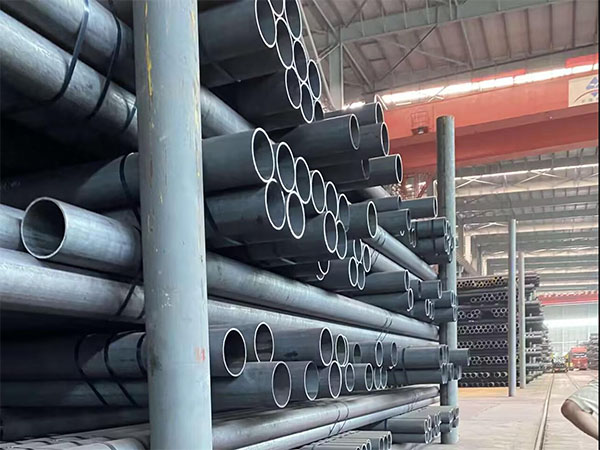Seamless steel pipes are widely used in industries such as structures, fluid transportation, boilers, and oil and gas due to their excellent strength, pressure resistance, and extensive application fields. To ensure its performance, safety and interchangeability, different countries and regions have formulated corresponding technical standards, which clearly stipulate the dimensions, tolerances, materials, processes and inspection methods of seamless steel pipes.

Major international standard systems
ASTM (American Society for Testing and Materials)
ASTM is one of the world's most influential organizations for setting materials standards, and its standards are widely used in fields such as oil and gas, boiler manufacturing, pressure vessels, chemical engineering, and building structures.
Main features: Standard numbers usually start with "A" (indicating steel types), such as A106, A53, etc. Pay attention to material composition, performance testing methods, dimensional standards, and test requirements, etc.
Representative standard:
ASTM A106: High-temperature seamless carbon steel tubes, often used for transportation in high-temperature environments (boilers, heat exchangers, etc.).
ASTM A53: General-purpose seamless and welded pipes, often used for the transportation of water, gas and steam.
ASTM A333: Seamless carbon steel tubes for low-temperature services, often used in low-temperature environments.
ASTM A335: Seamless alloy steel tubes, suitable for high-temperature and high-pressure environments, such as boilers and heating furnaces.
2.ISO Standard (International Organization for Standardization)
ISO is a global standards organization, jointly composed of standard institutions from various countries, with high standard compatibility. It is widely applicable to industries such as international trade, petrochemicals, and mechanical equipment manufacturing.
Representative standard:
ISO 3183: Steel tubes for transporting oil and gas, used to replace API 5L, mainly applied in oil and gas pipelines.
ISO 4200: Standard dimensions for Outer Diameter and wall thickness of steel pipes, which is a general standard for dimensions.
ISO 9329: Steel tubes for high-temperature and pressure purposes, mostly used in thermal energy equipment.
ISO 2938: Steel tubes for mechanical structures, commonly used in engineering structures and hydraulic cylinder barrels and other fields.
3.EN/EN ISO standard (European Norm, European standard)
EN is a regional standard formulated by the European Committee for Standardization (CEN) and is widely used in the European Union and its neighboring countries. The EN standard has some overlap with ISO, such as EN ISO.
Representative standard:
EN 10216-1: Seamless non-alloy steel tubes (for pressure purposes), commonly used in pressure vessels and hot water systems.
EN 10216-2: Seamless alloy steel tubes (for high-temperature applications), commonly used in steam boilers and chemical equipment.
EN 10297: Seamless steel tubes for mechanical structures are often used in heavy structural components and machine tool spindles.
4.DIN Standard (German Standard)
DIN is a German national standard, renowned for its high precision, and is widely used in the domestic German market as well as in Central and Eastern European markets. Occupy a dominant position in the fields of precision engineering and automotive machinery.
Representative standard:
DIN 2391: Precision seamless steel tubes (cold-drawn), commonly used in hydraulic systems, automotive cylinders, and machined parts.
DIN 17175: High-temperature seamless steel tubes, often used in equipment such as power plant boilers and heat exchangers.
DIN 1629: Seamless structural steel tubes, commonly used as structural components and mechanical frames.
Summary
The international standard system for seamless steel pipes is relatively complete, covering the entire process requirements from chemical composition, mechanical properties, dimensional tolerances, non-destructive testing to packaging. When selecting the type, based on the medium to be used, temperature, pressure and processing accuracy requirements, priority should be given to comparing key indicators such as chemical composition limits, strength and toughness requirements, and dimensional tolerance grades in the corresponding standards to ensure the safety and economy of the pipeline system.
